
Mol_PMB
Members-
Posts
2,159 -
Joined
-
Last visited
-
Days Won
112
Content Type
Profiles
Forums
Events
Gallery
Blogs
Store
Community Map
Everything posted by Mol_PMB
-
That's a big ask, and so broad that it would take many days/weeks of work to respond fully. There must be over a thousand different items of rolling stock within that remit. Perhaps you could make a list of what you have already and where it came from, and post it here? Also which books/websites you have checked already? Then people might be more motivated to try and fill the gaps, and it would become a resource that everyone could share and benefit from.
-
Another Woolwich: https://www.ebay.co.uk/itm/326520506516 An interesting map: https://www.ebay.co.uk/itm/356759325243
-
A selection of items possibly of interest: Woolwich: https://www.ebay.co.uk/itm/256881656303 CIE coaches to go with it: https://www.ebay.co.uk/itm/197184348600 141 might go at a good price: https://www.ebay.co.uk/itm/267209659964 Executive Mk3s: https://www.ebay.co.uk/itm/306171675918 Jouef CIE coach: https://www.ebay.co.uk/itm/235809461941 Hornby anticipation of a Mk2 that nearly was: https://www.ebay.co.uk/itm/156667076574 Cement bubble - ish: https://www.ebay.co.uk/itm/205372895930 Enterprise 206: https://www.ebay.co.uk/itm/297147858078 121 class with DCC at a good price, tempted myself but I really have no need for one! https://www.ebay.co.uk/itm/256629660695
-
I have been doing some more research on the G class, prompted by a discussion with @jhb171achill last weekend about the dimensional accuracy of some G class models. I haven't seen any official drawings of the G class so I've been looking into the origins of the design. Here's a nice photo of the preserved G601, from Jonathan Allen on Flickr: These small shunters are a variant of the widespread German Köf II design, of which over 1000 were built. The standard Köf II was a much squatter loco, because it was designed to be moved long distance on a flat wagon. Nevertheless, if you look at the photo below you'll see some common features with G601 above, things like the axleboxes and springs, oblong holes in the main frames, bonnet access doors, cab front windows. https://en.wikipedia.org/wiki/DRG_Kleinlokomotive_Class_II There are dimensioned drawings of the Köf II here: http://www.industriespoor.nl/tekeningDeutzA6M517.htm https://www.gartenbahn-werkstatt.de/de/zeichnungen/horst-dieter-hettler/diesel-lokomotiven/ https://www.woernitz-franken.de/koef.htm There are however several differences from the Köf II, not just the cab but the engine, which is air-cooled on a G but water-cooled on the Köf II. The G601 class is a Deutz model A8L 614 R, a variant of the Köf II produced in smaller quantities for industrial users in Germany, the Netherlands and elsewhere. There's more information on the A8L 614 R here, including drawings on all three websites: http://www.industriespoor.nl/tekeningDeutzKK130B.htm https://cftr.evolutive.org/amateur/engins_moteurs/Deutz_e.php https://www.rangierdiesel.de/index.php?nav=1405415&lang=1 Here's a Flickr photo from Alex Leroy illustrating one of them, with a clear resemblance to the G601s. The cab, bonnet and frames appear identical, but the bufferbeams and running plates are different, and the frames are closer together to suit 1435mm gauge. So it should be possible to carry over many of the A8L 614 R dimensions (from the drawings linked above) and check against the G class. Searching for A8L 614 R on the rangierdiesel website gives a list of 67 locos, which include G601 (Deutz 56119), G602 (Deutz 56118), G603 (Deutz 56120); note they are not in order. https://www.rangierdiesel.de/index.php?view=fahrzeuge&object=A8L+614+R&nav=1406157&lang=1&action=results Clicking on 'typengalerie' and selecting Deutz and A8L 614 R gives a gallery of hundreds of images of these locos across Europe, which have a great deal in common with the G601s, although they mostly have a low-level running board rather than a footplate at cab floor height. Here's an example: http://www.rangierdiesel.de/images/basic/deutz_56744_58.jpg There are even three photos of G601 at work which I hadn't seen before: http://www.rangierdiesel.de/images/basic/deutz_56119_51.jpg http://www.rangierdiesel.de/images/basic/deutz_56119_52.jpg http://www.rangierdiesel.de/images/basic/deutz_56119_53.jpg Some of the later A8L 614 R class had the larger windows of the G611s: http://www.rangierdiesel.de/images/basic/deutz_57236_53.jpg So, what about the G611s? These were an improved model with more power, designated A8L 714 R. Searching for A8L 614 on the rangierdiesel website gives a list of just 7 locos - our familiar G611 class. https://www.rangierdiesel.de/index.php?view=fahrzeuge&object=A8L+714+R&nav=1406157&lang=1&action=results The list gives works numbers as: G611 (Deutz 57225), G612 (Deutz 57224), G613 (Deutz 57226), G614 (Deutz 57228), G615 (Deutz 57223), G616 (Deutz 57227), G617 (Deutz 57229); note they are not in order. There's also a link to a photo of the preserved G613. Later, the model designation became KK140 B, such as this example on Flickr from Helgoland01. This may have had a different engine, but I'm not sure. Note the light clusters similar to the G611s but positioned differently: My next step is to overlay the 3 drawings of the A8L 614 R and compare to the Worsley Works etched parts, and we'll see where we go from there...
- 27 replies
-
- 11
-

-

-

-
LNERW1, no need to apologise. I'm sorry that my comment seems to have stirred up trouble. Let's get this thread back on the rails!
-
Making an ‘E’ – the Maybach Diesel Model Assembly thread
Mol_PMB replied to Mol_PMB's topic in Irish Models
Now, if anyone would like to build an E401 themselves, here's some more information. Firstly, I've attached the draft build instructions so you can see what you would be letting yourself in for. This document isn't complete yet - I need to spend another evening on it populating the last couple of sections with photos and tidying up the text. You'll see where it peters out! I'll finish this off in the next few weeks. This build thread is complete but not so detailed. I had the etches made for me by 4Dmodelshop. A set of one body etch (0.25mm nickel silver) and one chassis etch (0.45mm brass) can be ordered direct from them and the total cost would be about £120 including UK postage and VAT. I expect postage to Ireland would be a bit more. If you're interested then I can provide details of what to order and how. I would rather you ordered direct from the supplier than for me to end up as an intermediary - that would cost more as well as taking up my time. Note that this is no way a commercial venture - I'm making nothing out of it - my reward will hopefully be seeing a few more E401s built by others. The instructions list the other bits you will need for the body, which should all be readily available. Chassis construction is a very personal choice and I haven't finished the instructions for that yet, but you can see how it went together in the last couple of pages of this thread. My loco also has DCC decoder, stay alive and working lights, but again that's a very personal choice and I'll leave that to the individual. Please send me a personal message if you're interested. Cheers, Mol E401 Build Instructions.pdf -
This is a diagram, not to scale, showing the former 5-compartment coaches converted to sleeping cars. The arrangement seems to have been reasonably consistent but with subtle variations between coaches. I don't have photos of both sides of all vehicles, but there are enough to show that there were distinctly different window arrangements each side. The top diagram shows an unmodified 5-compartment coach. The middle diagram shows the side which retains windows near the ends, but the windows near the middle are blanked. The black windows are present on all vehicles, whilst the coloured ones are more variable and may or may not be present. The bottom diagram shows the opposite side, which retains windows in the middle but most windows at the ends are blanked. Almost all vehicles are the same on this side, just 233A has one extra window blanked. In all cases, only one door remains in use on each side. They have all been significantly re-panelled too. 247A appears to have started life as a 6-compartment coach. All the photos I've found so far show the same side, which retains windows in the middle but most windows at the ends are blanked, similar in principle to the 5-compartment coaches but of course they are in slightly different places: 224A was a former 4-compartment coach and was quite different, retaining its panelling and almost all of its windows, as well as 2 doors remaining usable. I haven't found a photo of the other side. Not much point doing a diagram of this as so little has changed: Now, SSM make kits for 4-compartment and 6-compartment coaches, but not the most common 5-compartment... Worsley works do make a 5-compartment though I'm not sure how the kits compare in style and dimensions. I'm also not certain that the prototype coaches were all the same length.
-
Passenger station platform heights in US and Ireland
Mol_PMB replied to raymurph's topic in General Chat
Fairly low platforms were common in parts of Ireland in the early years but by the orange CIE era most had been raised. The older coaches such as the 6-wheelers had two footboards to act as steps for the passengers. You might have to think about clearances between the trains and the platforms too - would the wider US stock hit a high platform spaced for Irish stock? Maybe you would get away with it with the difference in scale? -
On the question of numeral/lettering colour on the silver carriages. ‘Irish Railways in the 1950s and 1960s’ (McCormack) page 102 features a colour photo of a pristine silver coach, which may be one of the 2162-2171 series composites but I’m not 100% certain. The coach number and class digit are undoubtedly red, as is the dimension plate on the end. Everything else is either unpainted aluminium (bodyshell including ends and roof) or painted silver (bogies, underframe, battery boxes). I must say that in pristine condition it looks extremely smart. The photo is dated 26/03/1957. I am still hunting for other colour photos of silver carriages that are clean enough for the numeral colour to be determined. Such photos are hard to find as they got dirty so quickly and in most cases the numbers are too small to show up in a photo of a train. Did all the silver coaches have red numbers, or did some have green numbers as the silver locos did? I’m still hoping that IRM have some silver coaches up their sleeve to go on the Park Royal underframe. If not I can foresee that I’ll have to do some etches…
-
So, I'm back home now and looking through my references and the invaluable IRRS photo archive. Here are some links to 6-wheel sleeping car pictures in the 220-250 number series, and notes on some of the missing numbers where known: [220A was a 4-wheel S&T tool van, former carriage] 221A was a modified 6-wheel 5-compartment coach, matchboard sides, perhaps one of the first such conversions seen here in 1948: https://www.flickr.com/photos/irishrailwayarchive/53508748466/ [222A was a crane] [223A not yet found] 224A was a modified 6-wheel coach, appears to be a former GSWR 4-compartment first, seen here in 1959: [225A & 226A not yet found] 227A was a modified 6-wheel coach with 5 compartments, seen here in 1963 and on an unknown date: https://www.flickr.com/photos/irishrailwayarchive/54256772811/ [228A to 230A not yet found] [231A was an odd 4-wheeler with a balcony] 232A was a modified 6-wheel coach with 5 compartments, seen here in 1955: https://www.flickr.com/photos/irishrailwayarchive/53498764576/ 233A was a modified 6-wheel coach with 5 compartments, seen here in 1964: https://www.flickr.com/photos/irishrailwayarchive/54251290821/ 234A was a modified 6-wheel coach with 5 compartments, originally WLWR coach 907, seen here in the 1950s, now preserved at a private location: https://www.flickr.com/photos/irishrailwayarchive/53509192299/ [235A not yet found] 236A was a modified 6-wheel coach with 5 compartments, 3 photos from the 1970s and 1980s: https://www.flickr.com/photos/irishrailwayarchive/53527643119/ https://www.flickr.com/photos/irishrailwayarchive/53509017401/ https://www.flickr.com/photos/irishrailwayarchive/53569603262/ 237A was a modified 6-wheel coach with 5 compartments, seen here in 1957 (on the right): https://www.flickr.com/photos/irishrailwayarchive/53511443501/ 238A was a modified 6-wheel coach with 5 compartments, seen here in the 1950s (4 photos) and again in 1969 (probably opposite sides but maybe modified in the intervening years https://www.flickr.com/photos/irishrailwayarchive/53507984227/ https://www.flickr.com/photos/irishrailwayarchive/53511470303/ 239A was a modified 6-wheel coach with 5 compartments, seen here in 1976: https://www.flickr.com/photos/irishrailwayarchive/53570459261/ [240A was the Wexford/Rosslare breakdown van] [241A not yet found] [242A was a signal & electrical department tool van] [243A to 245A not yet found] 246A was a modified 6-wheel coach with 5 compartments, seen here in 1964: 247A was a modified 6-wheel coach which appears to have had 6 compartments, seen here in 1957 (on the left), 1968 and 1971: https://www.flickr.com/photos/irishrailwayarchive/53511443501/ https://www.flickr.com/photos/irishrailwayarchive/53510456042/ https://www.flickr.com/photos/irishrailwayarchive/53511516573/ Would anyone have any more details of the origin of any of these?
-
OK, it's quite disappointing that you asked several questions, I spent a fair amount of time looking up the answers in my books and official online sources, and providing references, and you have decided to ignore them and rely on AI and wikipedia instead. It doesn't make me enthusiastic to help you again in future.
-
Please use more original sources than Wikipedia and AI! CIE 2023 annual report states 2200km CIÉ Group Annual Report Year Ended 31 December 2023 Or you could go back to before the 1960s branch line closures which gives (on p26) a total of around 2150 route miles and 2900 track miles: CIE_1959.pdf The CIE annual reports are all online and have some interesting stats.
-
I wouldn't trust anything from AI! Certainly not as much as a figure quoted in the official history of the company. For the best marks, you would quote all four sources, and explain why they might be different from each other (e.g. track layouts changing frequently and the figures are from different dates)
-
Locos and Railcars of BnM, published 1996, says 'it is estimated that there is some 1200 miles of track in use' Memories of the BnM railways, published 2022, says 'BnM once had a network of permanent railway stretching 960km and some 240km of temporary rail tracks throughout the bogs'; also 'there is now approximately 500km of rail remaining'. 'Brown Gold', published 2010, says 'At its largest extent it was estimated to be 1360km in length, of which 850km was permanent way and the rest temporary track connecting different stockpiles to the main line ... at one point there were 340 locomotives and 5300 wagons in operation.' Take your pick on which number to believe! Brown Gold is the official history of the BnM.
-
Having failed to sell, this lot has now been relisted at a higher price! https://www.ebay.co.uk/itm/286469032318 Anyone looking for 085 in IE orange? https://www.ebay.co.uk/itm/388221313026 Autoballasters for those with deep pockets: https://www.ebay.co.uk/itm/388215728541
-
Making an ‘E’ – the Maybach Diesel Model Assembly thread
Mol_PMB replied to Mol_PMB's topic in Irish Models
This was on the edge of the old loading bank - the rails were probably already worn out when they were put there! The only rails still in the ground are on the causeway and pier, and there are large sections missing there. At the Tralee end, the greenway route follows the North Kerry to about half a mile beyond the junction, then cuts across the fields to the Fenit line. Otherwise it follows the trackbed quite faithfully. I was surprised that it is very much a standalone route and there is no integration with other walking routes - indeed at many of the former level crossings there are signs forbidding you from leaving the greenway (for example to walk into a village to patronise the pub / restaurant). -
A couple of plug and socket signs at Tralee, and a CIE notice of indeterminate age. I have seen IR points logo signs en route too.
-
The "Eyre Lee Bird" railtour Cork-Galway-Return 5th April 2025
Mol_PMB replied to Niles's topic in What's On?
I meant to mention that I really liked the wrong-end departure from Cork - that took me back 20 years to when some of the Tralee trains did that (though they were 141+Cravens back then). 220 made an appearance too, looking smart if a bit midge-spattered this morning: -
Making an ‘E’ – the Maybach Diesel Model Assembly thread
Mol_PMB replied to Mol_PMB's topic in Irish Models
Spa: I’m nearly back in Tralee now, hopefully time for a beer before the train back to Cork. I can see why the GSRPS thought this would make a great tourist railway. As a Greenway it’s a lovely walk / cycle and there have been hundreds of people using it today.- 200 replies
-
- 20
-

-
Making an ‘E’ – the Maybach Diesel Model Assembly thread
Mol_PMB replied to Mol_PMB's topic in Irish Models
Thanks - it was great to meet you all! Today E410 has visited Fenit on a sunny but very windy day. Seen here on the causeway and in the station. Now I am going to walk back to Tralee along the greenway.- 200 replies
-
- 19
-

-
The "Eyre Lee Bird" railtour Cork-Galway-Return 5th April 2025
Mol_PMB replied to Niles's topic in What's On?
What a great trip! Thanks to all those involved in organising it. All ran very smoothly from the punters’ point of view. It was great to meet some other forum members on board and see the progress on the Bandon tank too. Whoever arranged the weather deserves a bonus! -
The "Eyre Lee Bird" railtour Cork-Galway-Return 5th April 2025
Mol_PMB replied to Niles's topic in What's On?
-
Can we do the same with the 3’ gauge and use all the BnM track being lifted to reinstate the more useful narrow gauge lines? As I’m in Cork right now I’ll nominate the CBPR and extend it with a branch to the airport!
-
The "Eyre Lee Bird" railtour Cork-Galway-Return 5th April 2025
Mol_PMB replied to Niles's topic in What's On?
Ticked off so far: - Long Valley - Welcome Inn - Idle Hour - Hi B - Vicarstown Bar All good so far! I might do one more tonight but I have two more nights to work on your checklist -
The Eyre Lee Bird Railtour Cork-Galway-Return
Mol_PMB commented on Niles's event in Community Calendar
.png.c363cdf5c3fb7955cd92a55eb6dbbae0.png)

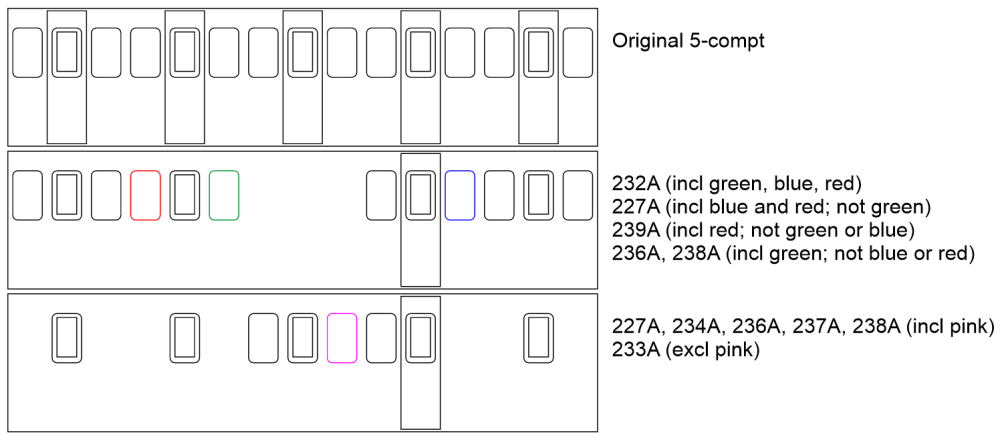
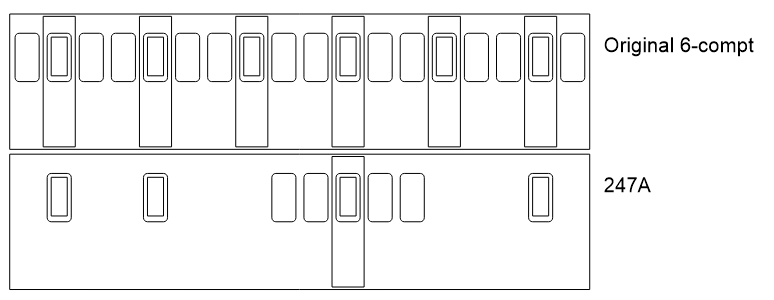


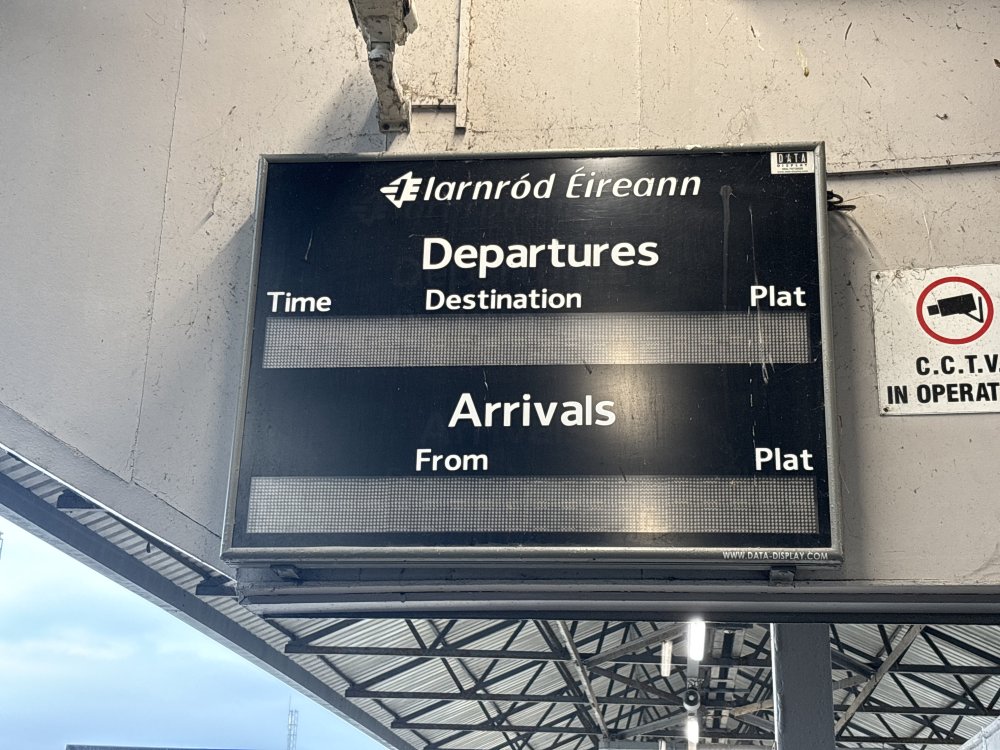
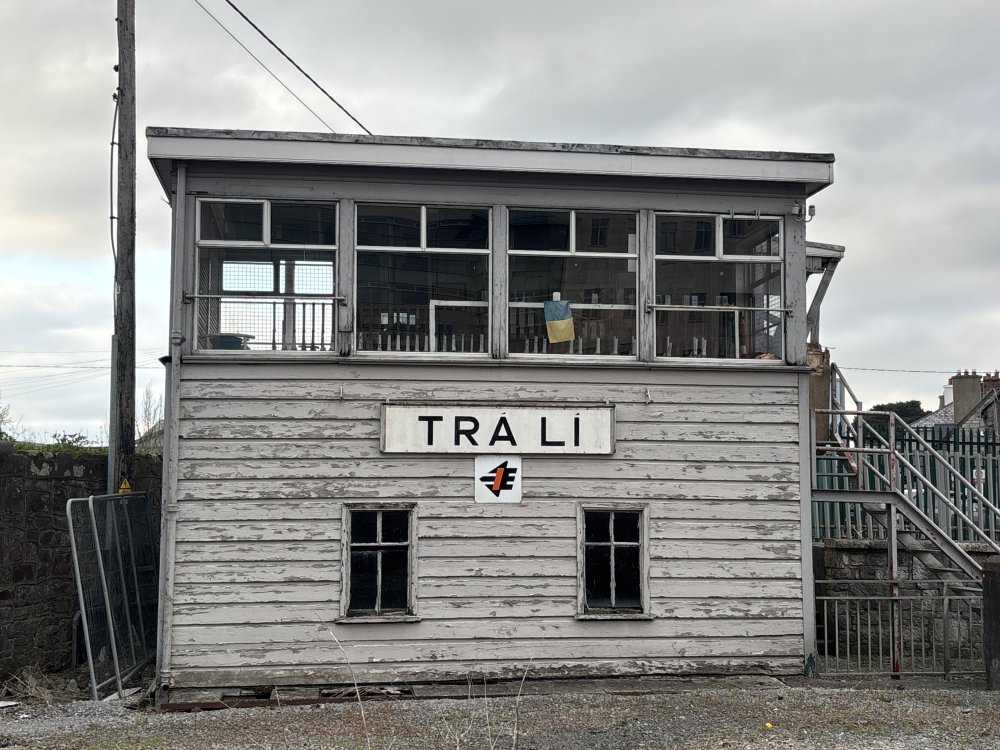
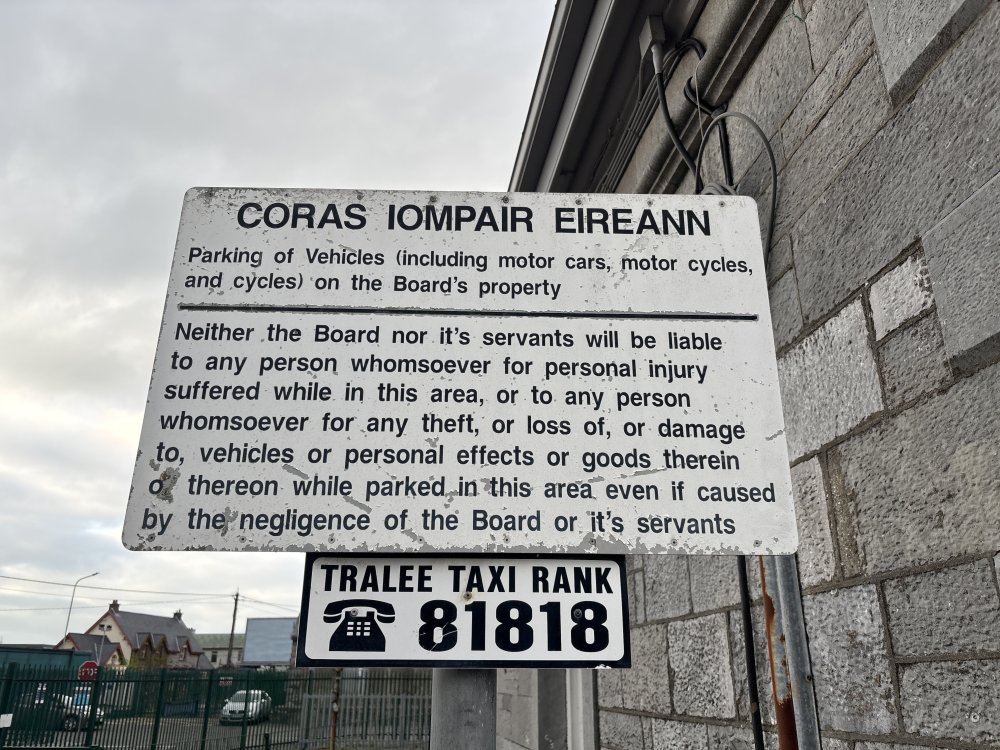
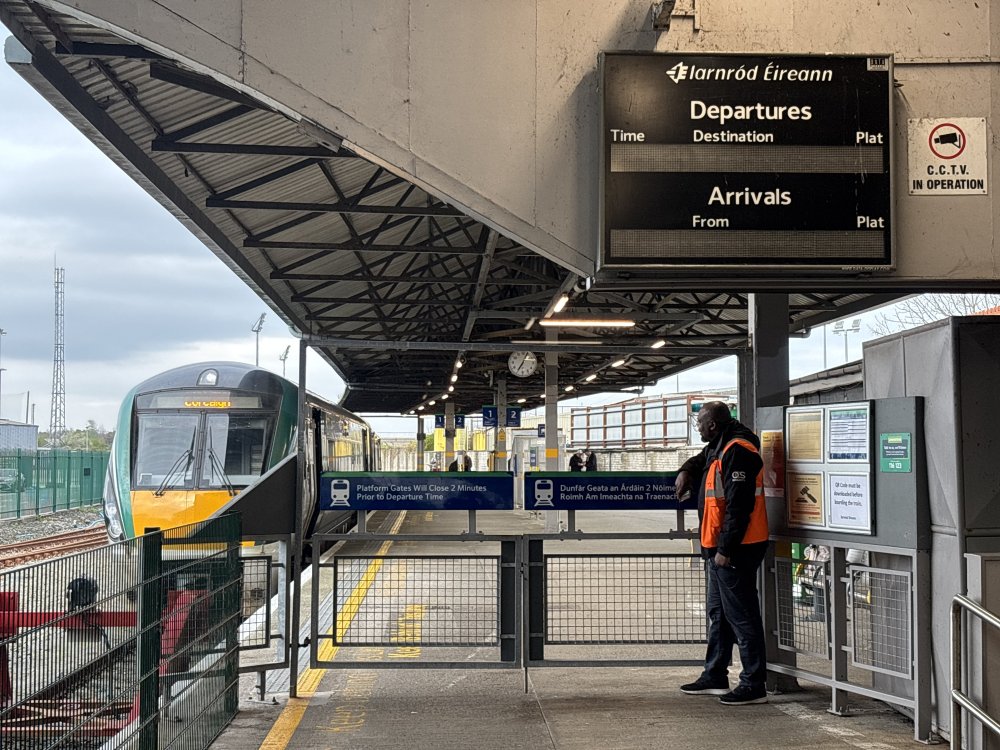
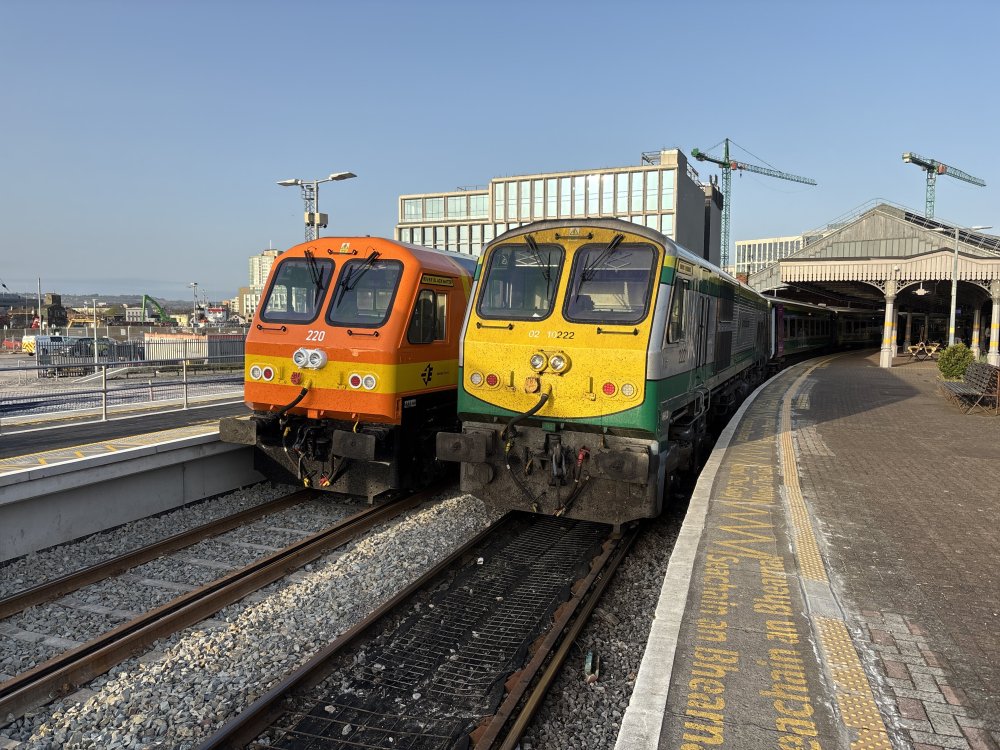
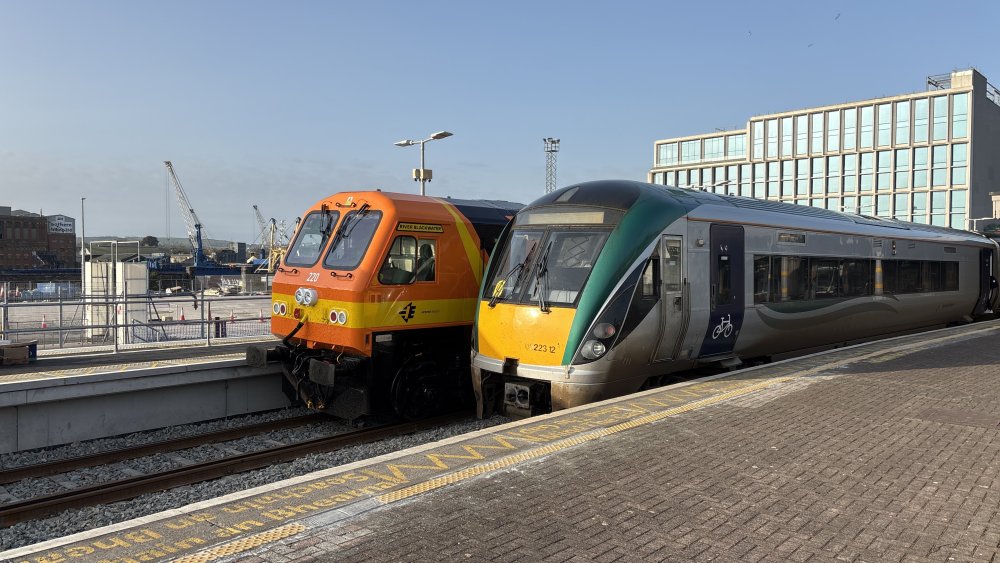
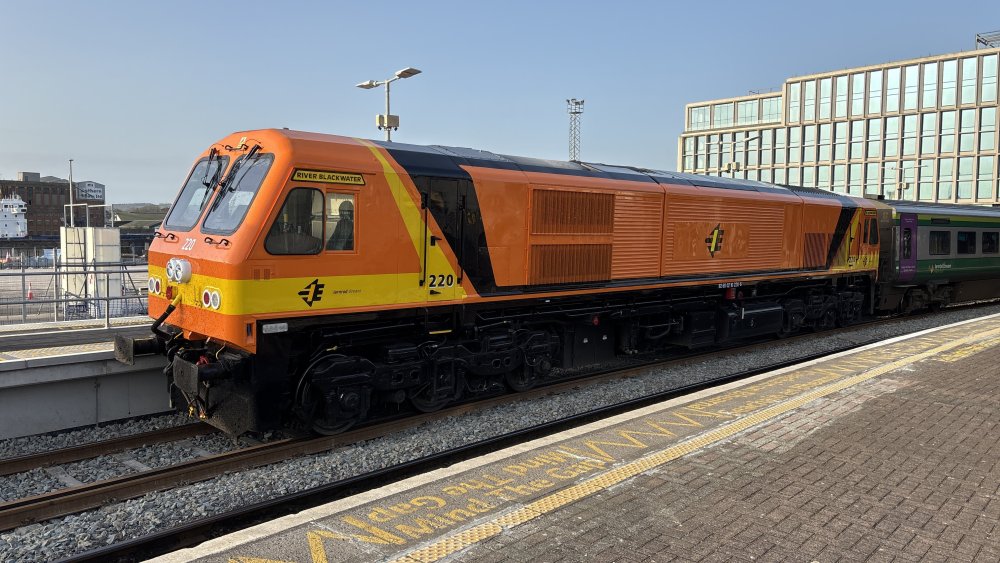
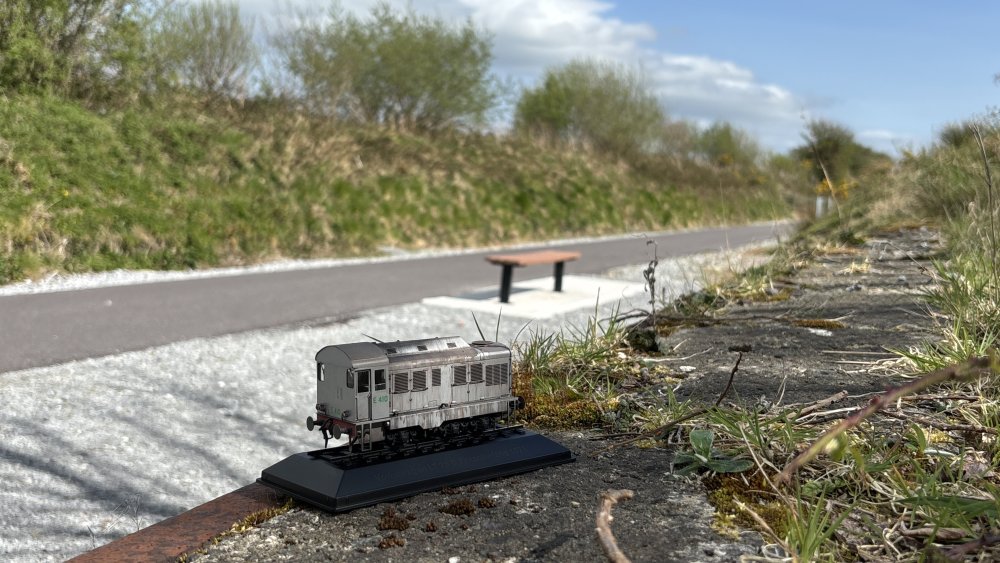

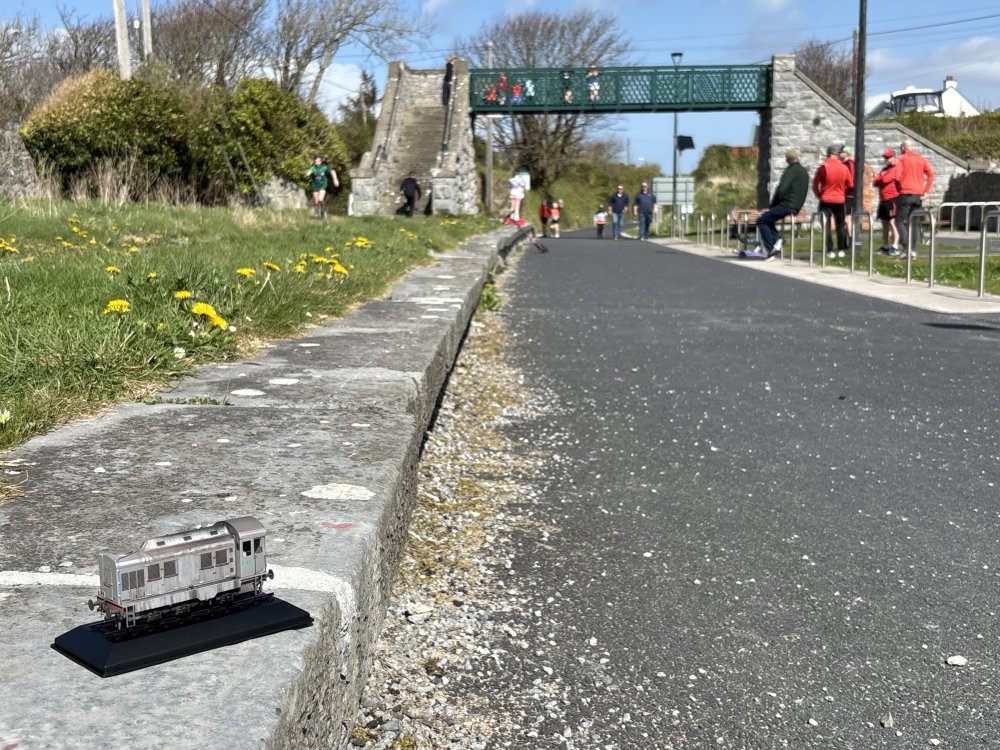
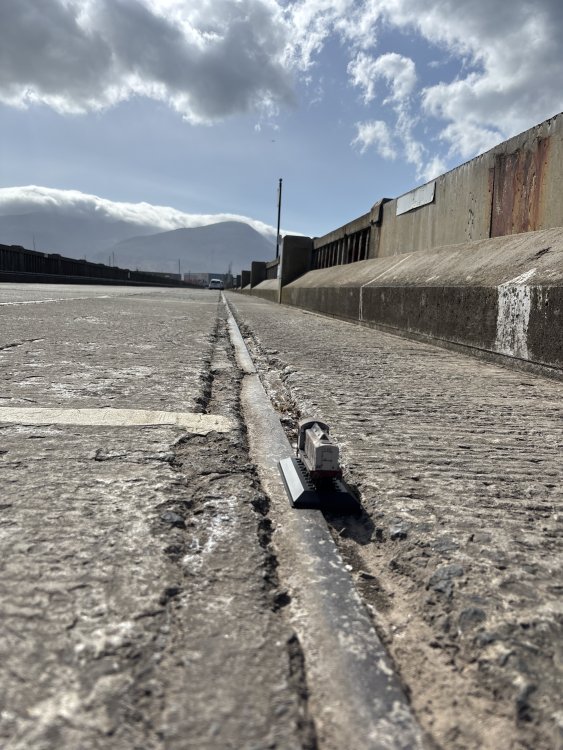
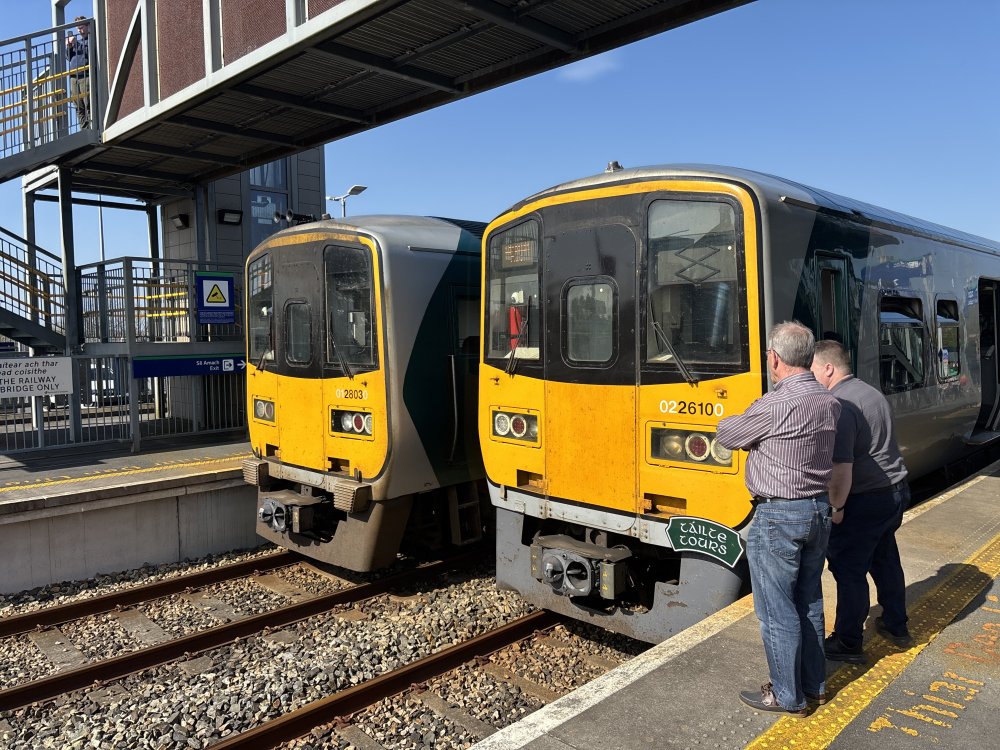

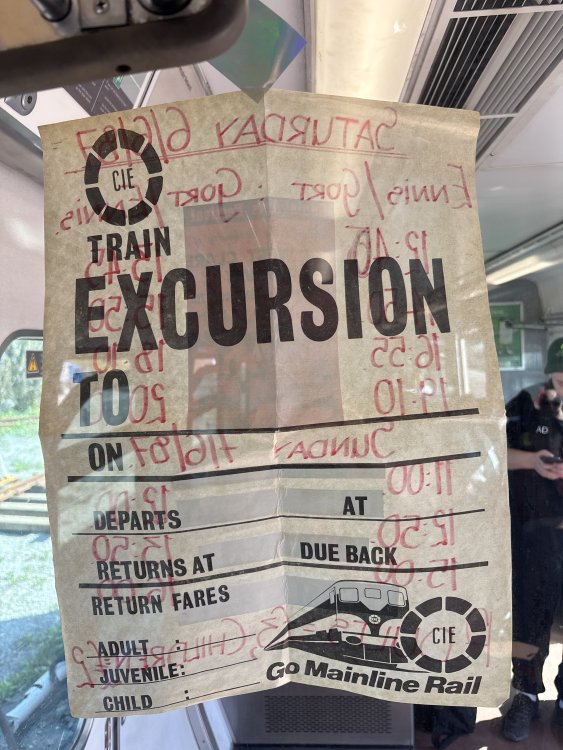
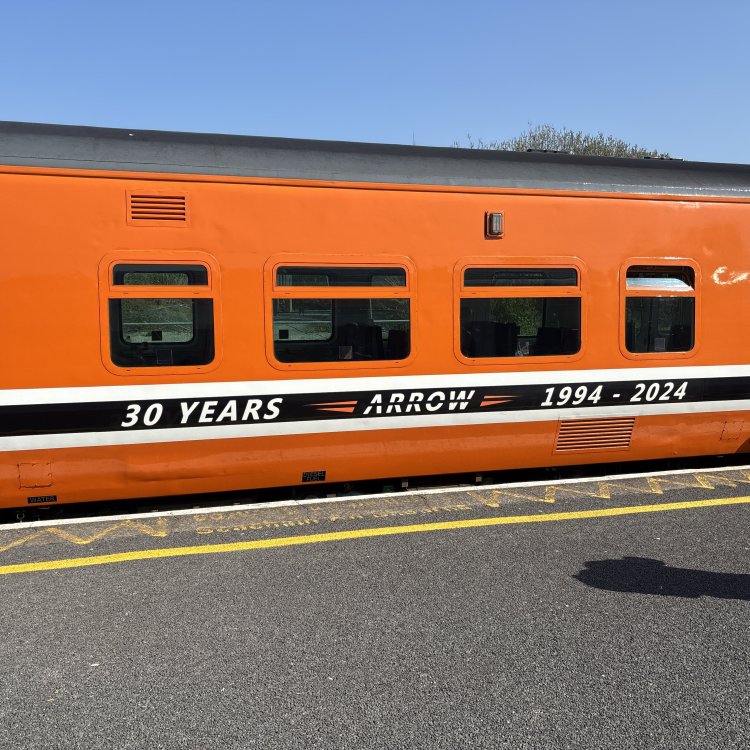
until